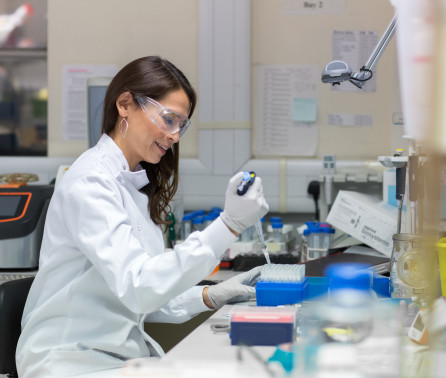BibTex format
@article{Moniri:2020:10.1021/acs.analchem.0c02253,
author = {Moniri, A and Miglietta, L and Malpartida, Cardenas K and Pennisi, I and Cacho, Soblechero M and Moser, N and Holmes, A and Georgiou, P and Rodriguez, Manzano J},
doi = {10.1021/acs.analchem.0c02253},
journal = {Analytical Chemistry},
pages = {13134--13143},
title = {Amplification curve analysis: Data-driven multiplexing using real-time digital PCR},
url = {http://dx.doi.org/10.1021/acs.analchem.0c02253},
volume = {92},
year = {2020}
}
RIS format (EndNote, RefMan)
TY - JOUR
AB - Information about the kinetics of PCR reactions are encoded in the amplification curve. However, in digital PCR (dPCR), this information is typically neglected by collapsing each amplification curve into a binary output (positive/negative). Here, we demonstrate that the large volume of raw data obtained from realtime dPCR instruments can be exploited to perform data-driven multiplexing in a single fluorescent channel using machine learning methods, by virtue of the information in the amplification curve. This new approach, referred to as amplification curve analysis (ACA), was shown using an intercalating dye (EvaGreen), reducing the cost and complexity of the assay and enabling the use of melting curve analysis for validation. As a case study, we multiplexed 3 carbapenem-resistant genes to show the impact of this approach on global challenges such as antimicrobial resistance. In the presence of single targets, we report a classification accuracy of 99.1% (N = 16188) which represents a 19.7% increase compared to multiplexing based on the final fluorescent intensity. Considering all combinations of amplification events (including coamplifications), the accuracy was shown to be 92.9% (N = 10383). To support the analysis, we derived a formula to estimate the occurrence of co-amplification in dPCR based on multivariate Poisson statistics, and suggest reducing the digital occupancy in the case of multiple targets in the same digital panel. The ACA approach takes a step towards maximizing the capabilities of existing real-time dPCR instruments and chemistries, by extracting more information from data to enable data-driven multiplexing with high accuracy. Furthermore, we expect that combining this method with existing probe-based assays will increase multiplexing capabilities significantly. We envision that once emerging point-of-care technologies can reliably capture real-time data from isothermal chemistries, the ACA method will facilitate the implementation of dPCR outs
AU - Moniri,A
AU - Miglietta,L
AU - Malpartida,Cardenas K
AU - Pennisi,I
AU - Cacho,Soblechero M
AU - Moser,N
AU - Holmes,A
AU - Georgiou,P
AU - Rodriguez,Manzano J
DO - 10.1021/acs.analchem.0c02253
EP - 13143
PY - 2020///
SN - 0003-2700
SP - 13134
TI - Amplification curve analysis: Data-driven multiplexing using real-time digital PCR
T2 - Analytical Chemistry
UR - http://dx.doi.org/10.1021/acs.analchem.0c02253
UR - https://pubs.acs.org/doi/10.1021/acs.analchem.0c02253
UR - http://hdl.handle.net/10044/1/82118
VL - 92
ER -
